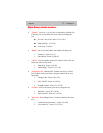
SV Subwoofers
Page 8
Phase. Think of bass waves as conflicting or enhancing each other, depending
on the timing of their arrival at your listening location (either together, or not).
Since some of your HT bass might come from main, center and/or surround
speakers, as well as your sub, getting these bass wave forms to arrive in a com-
plementary, enhancing fashion is the difficult job of the phase knob. Essen-
tially this control varies the timing of the bass waves coming from the sub.
You can tweak this endlessly and not hear much difference; but don’t despair,
the effect of bass cancellation will vary by volume and frequency in your room,
and no one setting is likely to ever be “perfect”. One simple technique to opti-
mize phase is to find a nice “bassy” loop (such as the menu of “Godzilla”) and
measure the loop’s bass response at various bass SPL peaks. As the loop runs,
you can make gradual changes to the phase knob. Where you see the most re-
sponse on a given bass passage is the phase setting providing the least bass
cancellation in your room (for the frequencies of the demo loop you chose).
Line In/Out. Use one of the sub’s “Line In” jacks to connect the subwoofer to
the output jack of your receiver/processor. Feeding one input is enough. If you
are using a conventional amp and/or a stereo setup you can use the “Line Out”
jacks to send sound (filtered of bass information) back to your system amp.
Bass Boost. Your Powered Cylinder is tuned “flat” so that no bass boost is
needed to get it’s full natural extension. Still, you might find the +3dB or
+6dB “bump” (centered on the 30Hz range) sounds good. This may be espe-
cially true if you listen to movies at a relatively low level. Be advised that such
a boost can significantly lower available amp head-room. If you like to push
your system to reference levels (loud!) we recommend running a 0dB boost.
Crossover By-Pass. If you allow your DD/DTS receiver or processor to man-
age bass frequencies (recommended) this switch must be “ON”. This disables
the “Crossover Frequency” knob and allows your sub to reproduce just what
it’s fed from the receiver.
Power (with LED).
“Off” is off. “On” is (always) On. And “Auto” allows
your sub to switch itself on or off depending on whether there is a bass signal
fed to it. Even if there is NO signal fed to the sub in this mode, the sub’s amp
takes few minutes to switch off (so it’s not continually going off and on in a
movie!). It turns on in a split second from it’s “sleep” mode.
High level inputs/outputs. Not commonly used today, but binding posts are
there in case you don’t have low-level inputs/outputs on your receiver/
processor. Typically used if you are not using a DD/DTS compatible system.
A/C connection/Voltage Selector. Plug your sub into a dedicated A/C outlet.
“Convenience” outlets of typical receivers often don’t provide the needed cur-
rent. Select the correct voltage for your A/C system (115v. in USA).
Fuse. User replaceable with a 4 amp, 125 volt 5 x 20mm “Slow Blow” fuse.
Fuses can be found at Radio Shack (Part Number 270-1066).














